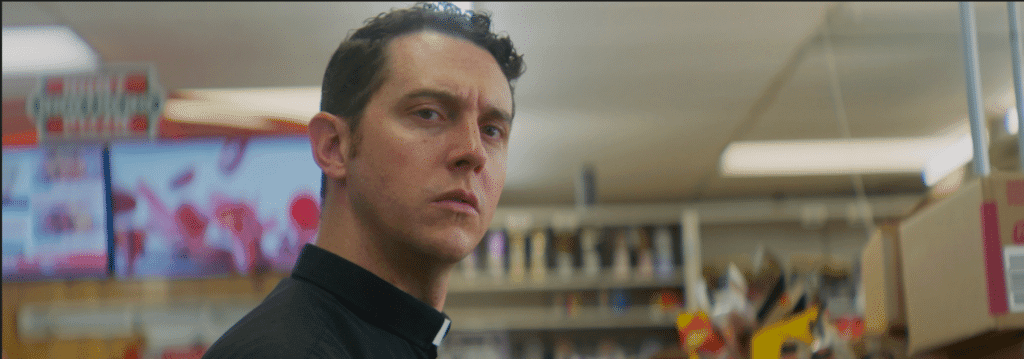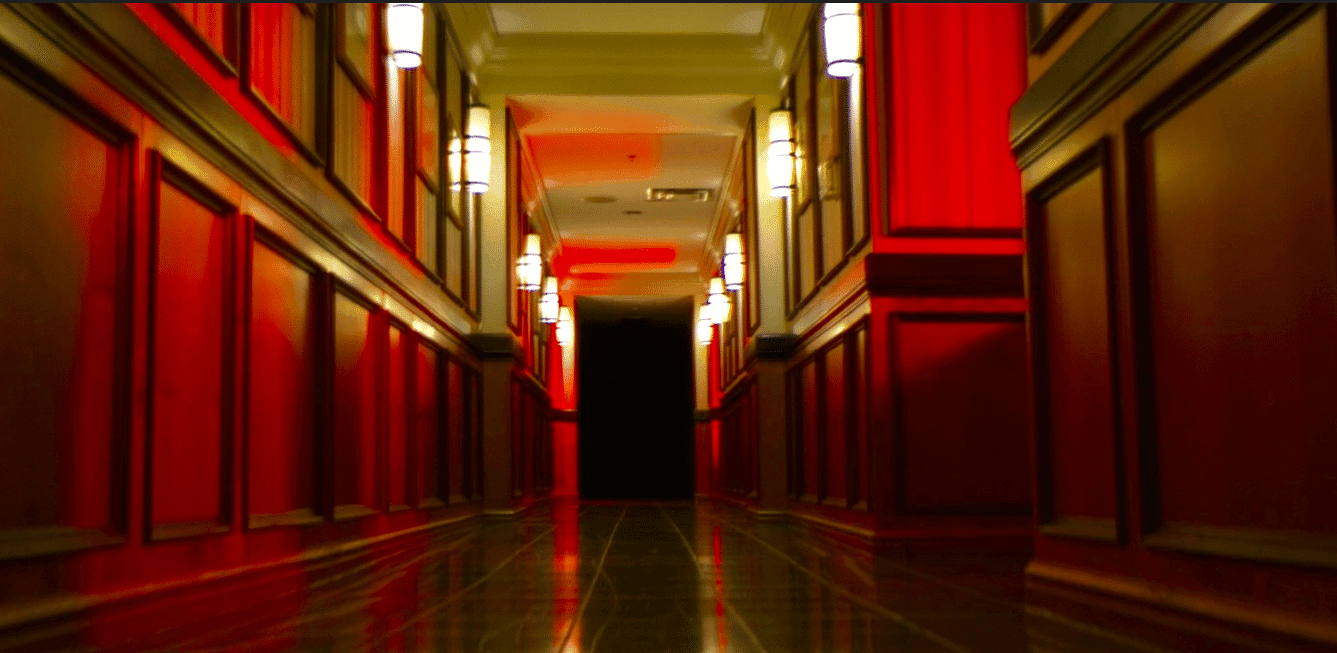
The Final Pact starts with a Suspiria-lit house and a fleeing priest; we’ll be here again, you catch yourself thinking, but it’s not quite how you’d imagine. Rather than a tried-and-tested religious horror, this is much more of a psychological drama, albeit one which draws on supernatural elements to get where it needs to be. As such, we move away from the solo fleeing, terrified priest, to a sunlit suburb and a gathering of young deacons (not yet priests) attending their last day at the seminary. We meet three of them in much closer detail: these are John (Charlie Prince), Mark (Sam Sneary) and Paul (Austin Freeman), the latter being quickly signposted to the audience as someone with demons of conscience. But there’s more: the priest in charge of the seminary drops a surprise: there will be, he reveals, one more exam before graduation, as part of a secretive tradition at St. Edwards which has yet to be revealed, other than adding that it has already begun.
A little rattled, our three ponder whether this might be some kind of a ruse, and decide to celebrate the end of their training anyhow while they wait to find out what the ‘test’ actually is. It’s an opportunity for them to discuss what has brought them to this point, too. They each have their reasons for electing to join the priesthood, with Paul in particular riven by doubts as to his calling. Perhaps inevitably, faith has to be tested in films of this nature. There’s a problem at hand first: as they drive to a bar, they encounter a woman, broken down at the side of the road. They stop to assist and she pleads for them to drive her home to her daughter, who is sick and needs her. In fact, she’s sick and needs them: her ailment is of a spiritual nature. The phrase ‘demonic possession’ is soon mentioned, and where most people would baulk at this and/or simply make their excuses, it’s a tempting quandary for a group of young priests, it seems. They drive her home. Ah, there’s the house from earlier…
Here, the film could have simply introduced a bendy-backed pre-pubescent with a potty mouth and it probably would have settled into a fine, if samey religious horror, the likes of which have popped up semi-regularly since the Seventies, and usually following the same story arc. Happily, The Final Pact plumps for a more ambiguous approach. There is a young woman at the house, but there’s no pea soup or gravel-throated jibing, only a normal – adult – woman who seems both baffled and amused by the arrival of three nervous men brandishing crucifixes. But that’s not it. She does seem strangely knowledgeable, and it becomes clear to the visitors that this set-up may be part of the mysterious test which was mentioned earlier; although they leave of their own accord, they regroup and decide to re-enter the house, to try and decipher the woman’s coded words.
As soon as they do so, the house morphs into a range of surreal set pieces, loosely themed around the Nine Circles of Hell (which led me to wonder how we were going to get through nine circles in eighty minutes – but as stated, it’s loosely done). On a very modest budget, the film is nonetheless very visually impressive, offering up warped…perspectives, vivid colours and chiaroscuro, all in the service of representing the surreal, and unreal elements now unfolding. The idea that these men each need to navigate the different circles in order to ‘pass’ the test is an interesting one, too, and one which doesn’t really need to avail itself of much in the way of overt horror. It’s more about suggestion and symbolism, with each room arranged, lit and shot differently to reflect the different sin present in each. More and more, the focus is Paul, and the backstory which has given him a unique range of references and issues when it comes to negotiating an exit.
As engaging an idea as this is, The Final Pact has one or two issues with tone, shifting from the dark night of the soul to the comedic in places in ways which feel somewhat jarring; there are also a couple of harried and/or stilted encounters with members of the public which are intended to look at how members of the clergy are regarded in everyday life, or to boost the sensation of oddness, as per the film’s requirements. However, it’s hard to fault the sheer ambition on display here, especially where it means disrupting many (or most) of the expectations around on-screen ‘exorcism’ and all that this entails. The performances from the leads are very good, too, and if there are a couple of additions or twists which aren’t perfect during the course of the film, then this doesn’t derail the whole. Written, directed and edited by F. C. Rabbath (whose work I have reviewed before), here’s more evidence of his commitment to indie cinema and what can be achieved by doing things differently.
